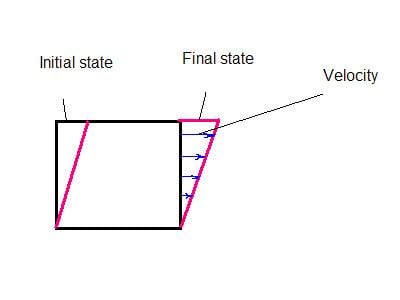 | ||
In fluid mechanics, simple shear is a special case of deformation where only one component of velocity vectors has a non-zero value:
And the gradient of velocity is constant and perpendicular to the velocity itself:
where
The displacement gradient tensor Γ for this deformation has only one nonzero term:
Simple shear with the rate
Important examples of simple shear include laminar flow through long channels of constant cross-section (Poiseuille flow), and elastomeric bearing pads in base isolation systems to allow critical buildings to survive earthquakes undamaged.
Simple shear in solid mechanics
In solid mechanics, a simple shear deformation is defined as an isochoric plane deformation in which there are a set of line elements with a given reference orientation that do not change length and orientation during the deformation. This deformation is differentiated from a pure shear by virtue of the presence of a rigid rotation of the material.
If e1 is the fixed reference orientation in which line elements do not deform during the deformation and e1 − e2 is the plane of deformation, then the deformation gradient in simple shear can be expressed as
We can also write the deformation gradient as
